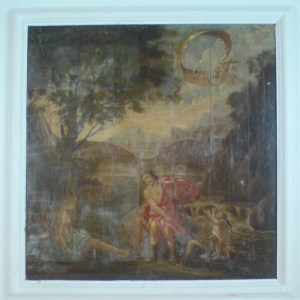 I’m running several events this year under the heading ‘Buson 2016’, celebrating the birth 300 years ago of the great Japanese painter and haiku master Yosa Buson (1716–1783).
I’m running several events this year under the heading ‘Buson 2016’, celebrating the birth 300 years ago of the great Japanese painter and haiku master Yosa Buson (1716–1783).
This week Andrew Mackenzie and I visited Jedburgh Grammar School, where we worked with S5 and S6 pupils. Andrew and I collaborated on Into Ettrick a couple of years ago, but this is the first time we’ve worked together with a school group. The idea was to create a piece which integrated image and text, as Buson did in many of his works.
We sketched and took notes at two spots by the Jed Water, near the Abbey Bridge opposite the abbey, and by the Canongate Bridge. Andrew showed them how to sketch with pencil and charcoal, while I encouraged them to be attentive to what has happening as we were there, using Norman MacCaig’s poem ‘Notations of Ten Summer Minutes’ as a model.
Back in school I guided the pupils into writing haiku based on their notes – snapshots capturing when, where and what happened – while Andrew led them in working with watercolour and pen-and-ink to develop sketches made earlier. Then we put the two together – some of the results are below.
David Blake, PT English who organised the school’s side of the session, commented:
Blank space! If there is one thing which I will always remember from the Yosa Buson workshop which I took part in, along with 35 Higher and Advanced Higher English pupils, it is the importance of blank space. As both artist and poet Buson would have instinctively understood the relationship between the visual and the written – something that we often forget.
Our day began somewhat greyer than I had hoped and the pupils’ initial enthusiasm reflected that sombre sky but as the first part of the day proceeded they quickly began to respond to what they saw in both visual and written mediums. Pupils who claimed that they could not draw were working hard to create images of what they saw, within minutes of being given a writing task they were enthusiastically coming up with ideas that I would struggle to draw out of them in the classroom. By the afternoon, armed with the sketchbooks in which we had drawn what we had seen and written down our thoughts, we were ready to embark on the production of ink illustrations and haiku poems. The quality of some of the work that the pupils produced was well beyond their expectations and despite their many claims that their work was rubbish you could see they were secretly pleased with how well their paintings and poems had turned out; one or two even confided that they had gone home that night and made further use of their sketchbooks!
This was one of the most enjoyable workshops that I have experienced in my teaching career and one which I believe that, as well as the wonderful creative experience of producing the visual art, the pupils got a lot out of in terms of their understanding of how to write effectively: in writing, as in art, it is as much about what you leave out as that which you put in – blank space.
With thanks to Jedburgh Grammar School, and to the GB Sasakawa Foundation for funding the work.
















































